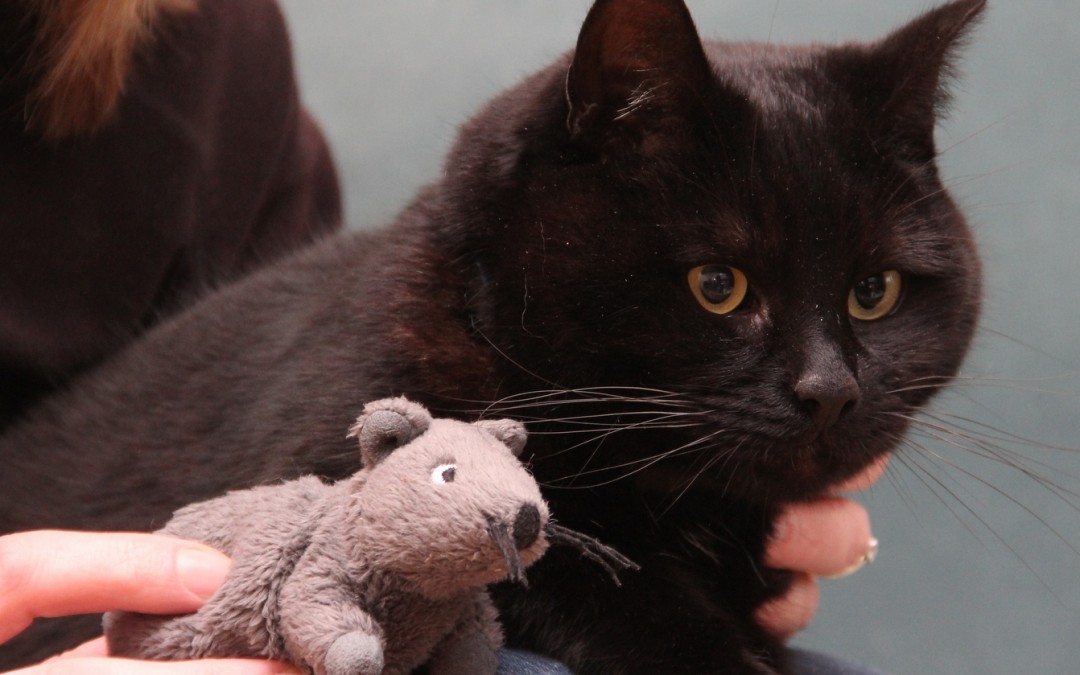If anyone is unlucky enough to get a mouse or rat infestation in their home, one of the obvious suggestions to control the pests is to “get a cat”. Unfortunately for Amanda, the reverse situation has taken place. She didn’t have a problem with mice, but she did have a cat. And thanks to the cat, 3 year old Ruby, Amanda’s home developed a problem with residential mice.
Ruby has a strong hunting instinct. Amanda can see this from the way that she plays with toys. If Amanda dangles a string with a feather on the end in front of Ruby, she’ll stalk it, crouching along the ground as she moves slowly towards it. Then she’ll pounce, grabbing the feather in her mouth.
Despite her love of the feathery toy, she’s shown no interest in hunting birds, but she has learned to enjoy hunting mice. She waits patiently outside their nests, pouncing on them as soon as they appear. She carries the live mice around by the scruff of the neck, occasionally dropping them to play with them, batting them backwards and forwards with her front paws, then picking them up again in her mouth. She also enjoys bringing them back into the house through the cat flap, so that she can play with them some more in the company of her owners. Amanda is horrified when this happens, and she does her best to take the mice off Ruby, releasing them outside while locking Ruby up until they’ve made their escape.
I’m often asked why cats bring their prey back into the house: it’s something to do with bringing trophies back to the family. It’s something that most modern owners would prefer their pets not to do: the traumatised bodies of birds and mice don’t fit well with our idea of an ordered, peaceful home.
An unusual aspect of Ruby’s passion for mice is that she never kills them. Most cats get tired of playing with a mouse eventually, and at that stage, the dispatch the small creature by a swift bite to the back of the neck. Ruby has never learned to do this. When she gets bored of playing with the mice, she just lets them run away. There’s nothing wrong with this when she’s outside: the mice can scuttle back to their nests to lick their wounds and recover. But when Ruby lets go of the live mice inside Amanda’s house, the mice are stuck indoors, and they end up making new nests in Amanda’s home, behind the skirting boards and under the floor. Amanda knows that this is happening because she can hear the scurrying of their little feet, and there are occasional raids on food stores. Ironically, Ruby’s dried cat food has been one of the targets of the mice, with small holes nibbled out of the base of the bag.
Amanda has had to resort to modern methods of pest control, laying mouse bait. She’s been worried about doing this: could she accidentally poison Ruby? She’s had to put the poison inside cardboard tubes so that the mice can reach it, but it’s beyond Ruby’s reach. It’s a month since she started doing this and the mouse population now seems to be under control.
The problem is that Ruby continues to appear through the cat flap with a mouse dangling from her mouth. Amanda knows that she can’t always be there to rescue the mice, so it’s just a matter of time till more live mice start to populate her home. She’s tried bells on Ruby’s collar, but they don’t seem to stop her catching mice. Amanda reckons that her battle to keep her home mouse-free is going to be an ongoing challenge.
TIPS
- Cats are often excellent hunters of birds and rodents
- They usually catch and kill their prey
- Occasionally they release their prey alive, which is a nuisance if they’re in your home when they do this

